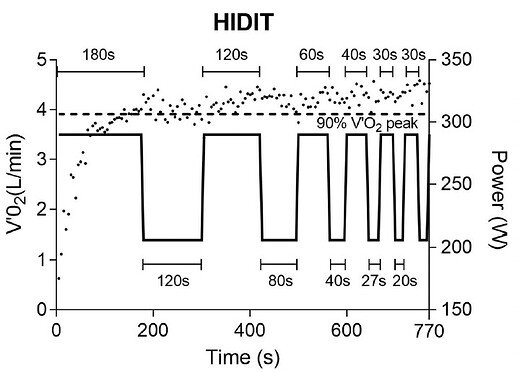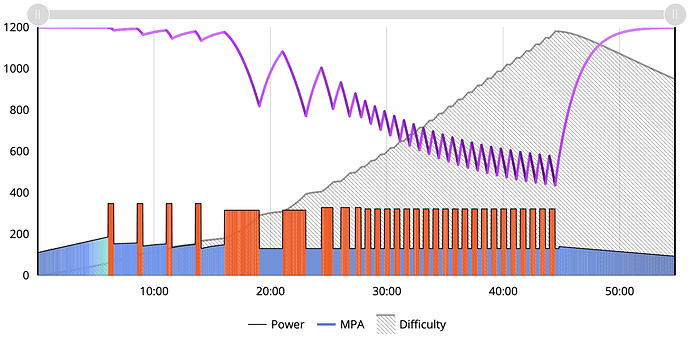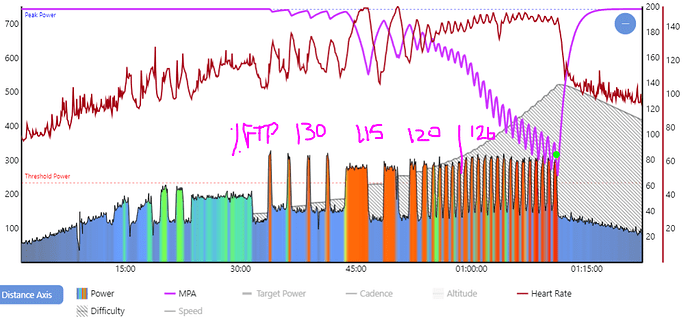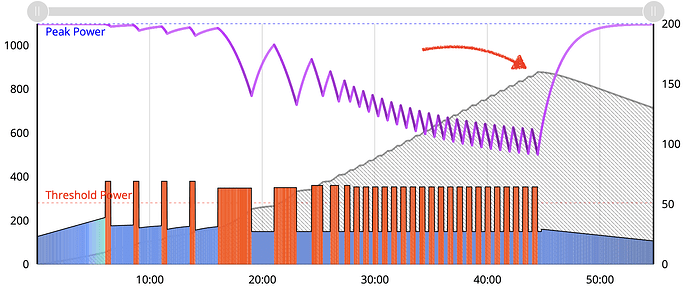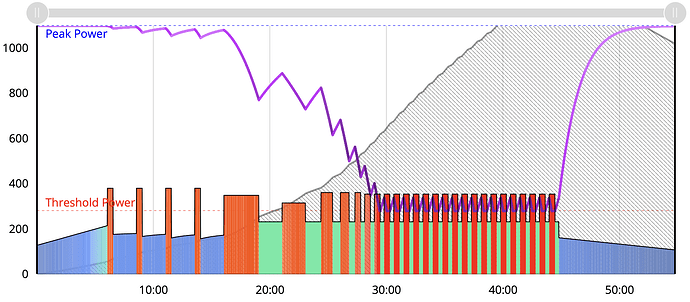This one is for all the physiology geeks out there… Thought I’d start up a thread on an interesting paper from this 2019 EJAP paper. I think it’s been mentioned/shared previously in another thread, but wanted to follow up on it and attempt to model it (and try the protocol for myself) using Xert.
The topic of interval intensity versus duration has been an interesting topic for quite some time now - dating back to the HIIT intervals of Tabata (40-20 micro intervals) & Billat (30-30 micro intervals), through Seilers work (4x8 min), and with some of Ronnestad’s recent works (30-15 micro intervals & fast-start intervals).
The paper I’ve linked to above suggests merging a few concepts that Xert has actually been using for quite some time to further optimize the time that can be spent > 90%VO2max, which is thought to be a great indicator of performance gains in VO2max (see Seiler’s 2013 study). To do this, they use a couple longer intervals to quickly get HR/VO2 up towards 90% of max before switching into 3:2 pattern micro-intervals to maintain VO2/HR above 90%max.
Figure taken from Vaccari, et al., 2020
In several workouts (SMART - Iron Man, for example), Xert uses a longer initial Target MPA interval to draw down your MPA (which also increases HR & VO2) before performing more endurance or other high-intensity intervals. By bringing MPA down, we expect more strain (XSS) than compared to the same efforts done without bringing MPA down first. A similar effect could similarly be achieved using our fast-start XSSR intervals (like you’ll find in the SMART - Closer or SMART - Gasoline series of workouts).
Getting back to the paper…their proposed High Intensity Decreasing Interval Training (HIDIT) protocol was described as follows:
" 3 min at high intensity and 2 min at low intensity; 2 min at high intensity and 1 min and 20 s at low intensity; 1 min at high intensity and 40 s at low intensity; 45 s at high intensity and 30 s at low intensity; and finally 30 s at high intensity and 20 s at low intensity, repeated until volitional exhaustion of the subject. The high–low ratio intensity duration was always 3/2. "
…where high-intensity is defined as their 5 MMP (derived using their CP/W’). We can easily recreate this in Xert using 5 MMP as the intensity for intervals! ![]()
I’ve re-created their protocol as a SMART, Mixed Mode workout, with only a few minor changes:
-
I used Target MPA intervals for the initial two intervals, rather than using fixed 5 min power. I suspect this will increase compliance by reducing workout difficulty a little on the front end, especially since the initial 8 minutes of the proposed protocol calls for 5 min of riding at 5 min power.
-
After concluding the initial 5 steps of the HIDIT protocol, I’ve utilized the Mixed Mode features of Xert, allowing you to complete the 30/20 efforts in SLOPE mode (2.0%), rather than ERG mode at 5 min power, which can sometimes lead to premature fatiguing from the ERG spiral of death. This part of the workout will likely feel similar to the SMART - Break on Through (To the Other Side) workout
It would be interesting to see if others wanted to try this workout and compare the workout difficulty/XSS to some well-established & effective HIIT protocols, like Ronnestad 30-15’s or Billet 30-30’s! I plan on trying it for myself sometime as well, but here would be some questions I’d be curious about:
- How long did it take to reach ~90%max?
- Were you able to maintain HR at/above 90%maximum?
- Once reaching the 30/20 micro-intervals, how many repetitions were you able to complete?
I’ve shared the workout to the Shared Workout Community, which you can join by clicking the link: here!
Once you’ve joined the shared workout community, the actual workout is here: SMART - Bow Down
Curious to see where the discussion goes! Cheers!
